Just like we connect with like-minded people, your brand can also form deep, lasting relationships with its audience. The secret to this is your brand personality. When your brand’s personality mirrors the values and preferences of your audience, it paves the way for deep bonds akin to friendships.
But what exactly is brand personality, and why is it essential for your business?
In this article, we’ll explore the concept of brand personality and explain its underlying psychology, benefits, and practical steps for developing and applying a unique brand personality.
I’ll also give you a practical list of 150 brand personality examples for your inspiration.
What Is Brand Personality?
Brand personality is the unique blend of human characteristics associated with a brand.
Just like people have unique traits that affect how they’re perceived and how others interact with them, a well-crafted brand has a distinct personality that shines through in everything it does—from its visual identity (brand fonts, colours, etc.) to its brand voice< to customer interactions.
This personality needs to align with the brand’s industry, audience, and positioning.
So, the brand personality shapes how people perceive and interact with the brand, whether it’s informal or formal, fun or serious, modern or traditional. It also plays a major role in shaping the brand culture.
The Psychology Behind Brand Personality
In the 1950s, sociologists coined the term ‘homophily’ (love of sameness) to describe how individuals are drawn to and connect with others who share similar traits, interests, beliefs, values, and backgrounds.
Well, this concept applies not just to people but to brands, too.
Consumers naturally gravitate towards brands that mirror their own personality. They prefer buying from companies that align with their self-perception and values, as this allows them to express their identity.
This study supports that. It shows that customers with extroverted personalities tend to favour brands with lively and active personas, while conscientious people lean towards brands that demonstrate responsibility.
Another study suggests that brands characterised by distinct personalities tend to evoke higher levels of trust and loyalty from consumers.
That means brands with unique and recognisable personalities are likelier to distinguish themselves in a competitive market and forge meaningful connections with their audience.
How Your Business Benefits From a Strong Brand Personality
A strong brand personality can bring many benefits to your business.
Here are some reasons why a well-defined brand personality will help your brand thrive:
Differentiation
A distinctive brand personality makes your company stand out from the competition and increases brand recall.Attracting the Right Audience
Your brand personality also acts as a magnet, attracting like-minded consumers who align with your values, beliefs, and aspirations.
A well-crafted brand personality can create a deep emotional connection with the right people, fostering a sense of commitment and affinity towards your brand.
Consistency
A clearly defined brand personality acts as a guide, ensuring consistency across all touchpoints and reinforcing your brand’s unique identity.
Before we dive into defining your brand personality, you may want to learn more about branding in general. Below you can get a free month of Skillshare Premium, which might help.
The 12 Brand Archetypes
Brand archetypes, inspired by psychologist Carl Jung’s theory, can help define your brand personality.
You might find brand archetypes somewhat simplistic, and I understand that. I admit, I don’t use them.
Nevertheless, brand archetypes can be a good framework for understanding and defining your brand’s personality. Combining two or more archetypes opens up some exciting possibilities.
I won’t delve into details here as a wealth of information is available on this topic.
Here’s just a brief overview of the 12 brand archetypes:
| Brand Archetype | Description | Examples |
|---|---|---|
| The Innocent | Represents purity, simplicity, and goodness. | Dove, Innocent Drinks, Volvo |
| The Everyman | Emphasises being down-to-earth, genuine, and relatable. | IKEA, Budweiser, Subaru |
| The Hero | Portrays strength, bravery, and the desire to overcome challenges. | Nike, Under Armour, GoPro |
| The Outlaw | Represents rebellion, nonconformity, and breaking the rules. | Harley-Davidson, Diesel, Virgin |
| The Explorer | Emphasises discovery, adventure, and the desire to explore new territories. | The North Face, National Geographic, Jeep |
| The Creator | Focuses on innovation, creativity, and expressing individuality. | Lego, 3M, Adobe |
| The Ruler | Represents power, authority, and leadership. | Rolex, Microsoft, Mercedes-Benz |
| The Magician | Portrays transformation, enchantment, and creating extraordinary experiences. | Disney, Red Bull, Lush |
| The Lover | Emphasises intimacy and passion. | Victoria’s Secret, Henry Rose, Swarovski |
| The Caregiver | Focuses on nurturing, empathy, and providing support and care. | World Wildlife Fund, UNICEF, Pampers |
| The Jester | Portrays humour, fun, and bringing joy to people’s lives. | M&M’s, Old Spice, Fanta |
| The Sage | Represents wisdom, knowledge, and guiding others. | Google, Wikipedia, The New York Times |
Jenifer Aaker’s Five Dimensions of Brand Personality
Brand archetypes are not the only framework around.
In 1997, marketing professor and branding expert Jennifer Aaker revolutionised the understanding of brand personality by introducing the Five Dimensions.
These dimensions offer a framework for evaluating and defining the unique personality traits that make a brand distinct.
They include:
Sincerity
Sincere brands are honest, trustworthy, and committed to ethical practices.
For example, they may prioritise customer relationships, support their employees, and contribute to the community and the environment.
The Body Shop is an example. The brand stands firmly against animal testing, promotes fair trade with its ingredient sourcing, and actively supports social and environmental campaigns.
Excitement
Excitement-driven brands are daring, lively, and innovative.
They strive to create a sense of thrill and adventure, appealing to customers who seek stimulation, inspiration and novelty.
GoPro embodies this brand personality trait with its strong association with extreme sports, outdoor activities, and adrenaline-filled experiences.
Competence
Competent brands are perceived as reliable, intelligent, and capable.
They prioritise quality, expertise, and efficiency to instil confidence and trust in their customers.
Microsoft is an example of a brand that exemplifies competence. With its robust software solutions and technological advancements, Microsoft has established itself as a leader in the tech industry.
Sophistication
Sophisticated brands are characterised by elegance, prestige, and charm.
They align with consumers who appreciate refinement, taste, and luxury.
An excellent example of a sophisticated brand is Rolex. Renowned for its exquisite and prestigious watches, Rolex stands for precision, craftsmanship, and exclusivity.
Ruggedness
Brands that embody ruggedness are seen as tough, strong, and adventurous.
They target people who crave a wild, resilient, and outdoorsy lifestyle.
Patagonia is a good example of a rugged brand. With a focus on outdoor apparel and gear, Patagonia appeals to adventure enthusiasts and nature lovers.
Here is a quick summary of Jennifer Aaker’s 5 dimensions of brand personality:
| Brand Personality Trait | Sub-Traits | Examples |
|---|---|---|
| Sincerity | Genuine, Honest, Wholesome | The Honest Company, Toms, Dove |
| Excitement | Daring, Spirited, Adventurous | Red Bull, GoPro, Tesla |
| Competence | Reliable, Intelligent, Trustworthy | IBM, Google, Michelin |
| Sophistication | Elegant, Luxurious, Prestigious | Chanel, Rolex, Ritz-Carlton |
| Ruggedness | Strong, Tough, Outdoorsy | Harley-Davidson, Jeep, The North Face |
Brand Personality Is Not One-Dimensional
Your brand shouldn’t settle for just one personality trait. That would make it bland. Instead, infuse it with a blend of different characteristics to make it special and unique.
Let’s take Patagonia as an example again.
Patagonia embodies ruggedness, catering to adventurous people who crave wild experiences.
Yet, it also shows sincere traits by prioritising sustainability and ethical practices in its business operations.
In addition, Patagonia showcases competence through its high-quality products and expertise. It continuously innovates to produce gear that is higher performing and has a lower carbon footprint.
By blending all these personality traits, Patagonia creates a distinct personality. Ultimately, it’s all about forging an emotional connection and standing out, but honest!
But just as people can reveal different parts of their personality in various contexts, so can your brand.
Depending on the context, brands can emphasise their personality traits more or less. For example, your brand might show a slightly more professional personality on LinkedIn than on Instagram.
Brand Personality Mapping
When you define your brand personality, it can be helpful to create a personality map to visualise where your brand falls on a spectrum of traits. This is called a brand personality slider.
You have several options. You can use Jennifer Aaker’s five dimensions or the brand archetypes or create your own set of specific characteristics.
Then, map them on a slider. This is a simple and intuitive way to visualise each feature compared to another.
See for yourself.
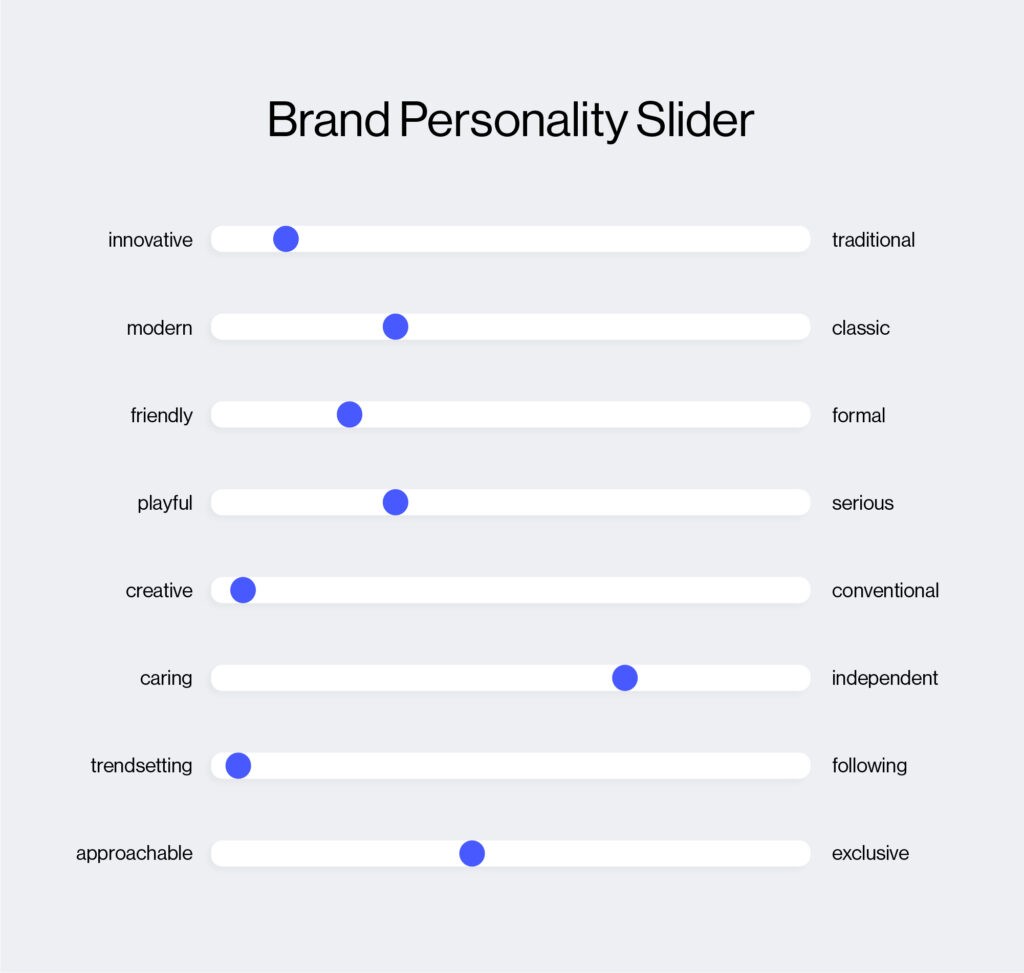
You might also find my free Brand Personality Slider Template for Google Slides helpful.
Craft Your Brand Personality Step-By-Step
Now, let’s put everything together and discuss some steps you can take to define your unique brand personality.
1. Understand What Your Brand Is About
Start by gaining a thorough understanding of what your brand is about. Define your brand’s mission, vision, values and positioning. Then, build your brand personality on this foundation. Think about questions such as:- What’s your brand’s ultimate goal beyond profit? How can your brand change the world?
- How can your brand reach this goal?
- What values does your brand live by?
- How is your brand different from other brands? What makes it so unique?
2. Identify Your Target Audience
Conduct meticulous research to understand the demographics (age, gender, location, …) and psychographics (personality, values, interests, …) of your target audience. Understand their preferences, behaviours, and desires. This knowledge will help you create a brand personality that resonates with them.- What’s their personality?
- What’s their lifestyle?
- What are their opinions?
- What do they value, and how do your brand’s values align with theirs?
- How do they talk?
- What do they talk about?
- Who are their friends?
- What other brands do they buy from?
3. Understand Your Target Market and Competition
Conduct market research to gather information about your target market and competition.
Analyse overall trends, competitor strategies, and market dynamics. This information will inform your brand personality by helping you identify gaps and opportunities to differentiate.
- Who are your competitors?
- What do they stand for?
- Are there gaps in the market?
- How can your brand stand out? What’s its unique position in the market?
4. Choose Brand Attributes
Choose the specific personality traits and attributes that represent your brand personality based on the steps above.
Choose attributes that fit your brand essence, are relevant to your target audience, and set your brand apart. Remember, the unique blend of personality traits often makes a brand original.
A brand personality slider can help you with this step, as can the 12 Archetypes and Jennifer Aaker’s 5 Dimensions of Brand Personality.
But don’t be afraid to break free and develop your brand personality attributes.
- Which traits best represent your brand’s personality?
- Which characteristics resonate with your target audience?
- Do these traits align with your brand values?
- How can these traits differentiate your brand from the competition?
120 Brand Personality Attribute Examples
Developing a brand personality can be challenging.
That’s why I’ve put together a list of 120 attributes that can serve as inspiration for creating your brand personality.
Choose a balanced mix of attributes to create excitement. Too many attributes can dilute the brand, while too few can quickly become tedious. I recommend between 3 and 6.
Here is the list:
- Active
- Adventurous
- Analytical
- Appreciative
- Approachable
- Articulate
- Bizarre
- Blunt
- Calm
- Caring
- Charming
- Cheerful
- Clever
- Collaborative
- Compassionate
- Confident
- Considerate
- Cooperative
- Courageous
- Creative
- Critical
- Cunning
- Cute
- Daring
- Decadent
- Delicate
- Dignified
- Disciplined
- Discreet
- Disruptive
- Down-to-earth
- Dramatic
- Dreamy
- Driven
- Edgy
- Efficient
- Elegant
- Empathetic
- Enthusiastic
- Exciting
- Fair
- Feminine
- Friendly
- Fun
- Funny
- Futuristic
- Generous
- Gentle
- Glamorous
- Gloomy
- Heroic
- Honest
- Humble
- Idealistic
- Imaginative
- Independent
- Innovative
- Inspiring
- Intellectual
- Intuitive
- Inventive
- Joyful
- Kind
- Knowledgeable
- Loyal
- Luxurious
- Masculine
- Mature
- Mindful
- Modest
- Mothering
- Mystical
- Natural
- Nurturing
- Optimistic
- Outspoken
- Passionate
- Patriotic
- Peaceful
- Playful
- Polished
- Polite
- Pragmatic
- Protective
- Provocative
- Quirky
- Radiant
- Rampant
- Rational
- Reliable
- Respectful
- Responsible
- Romantic
- Rustic
- Sarcastic
- Selfless
- Sensual
- Sexy
- Silly
- Sincere
- Skeptical
- Sneaky
- Sophisticated
- Spiritual
- Supportive
- Sweet
- Sympathetic
- Thoughtful
- Tough
- Trendy
- Trustworthy
- Unconventional
- Vibrant
- Vintage
- Warm
- Welcoming
- Whimsical
- Wise
- Witty
- Youthful
Apply Your Brand Personality
To effectively apply and evolve your brand personality, consider the following steps:
1. Craft Your Brand Identity
Develop a brand name and brand voice that expresses your brand personality. Choose a logo, brand colours, fonts and image style that complement it.
2. Tell Compelling Brand Stories
Use brand storytelling to express your brand’s personality and values. Tell stories that create a connection with your target audience.
3. Maintain Brand Consistency
Consistency is crucial to establishing your brand personality. Ensure all online and offline customer interactions consistently reflect your brand’s personality traits.
Create brand guidelines defining how your brand is communicated across different channels and touchpoints. This will help everyone involved with the brand ensure consistent communication.
4. Monitor and Refine
Be sure to monitor and refine your brand personality. Gather customer feedback and make necessary refinements to ensure your brand remains relevant and resonates with the right people.
Brand Personality Examples
To wrap up, I will give you five examples of different brand personalities. Let’s explore how other organisations do it.
Oatly: Quirky, Authentic, Sustainable
Oatly, the Swedish oat milk brand, has developed a quirky, authentic, and sustainable personality. With its playful and irreverent tone, it connects with its audience in a fun, engaging way.
At the heart of Oatly’s brand values are sustainability and ethical considerations, which the company expresses in a rebellious and unconventional tone.
The consistent application of its unique brand personality has contributed to Oatly’s strong connection with people, positioning it as a plant-based milk industry leader.
Even Oatly’s website is unconventional; see for yourself.
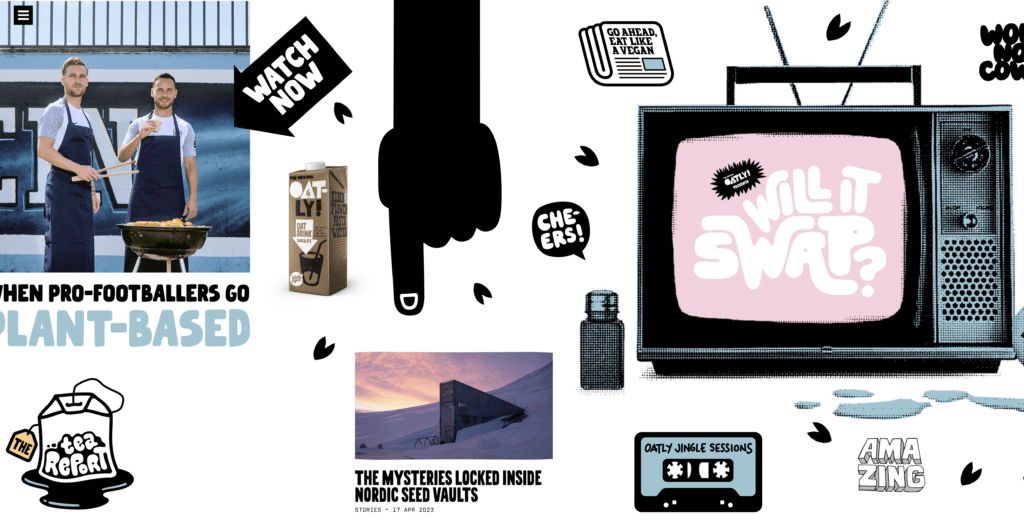
Allbirds: Innovative, Eco-conscious, Relatable
Allbirds has an innovative, environmentally conscious, likeable brand personality.
With a focus on sustainability, Allbirds positions itself as a brand that puts the environment first without sacrificing style and comfort.
Do you notice that Allbirds has quite similar values to Oatly, but their personality is entirely different? See for yourself.
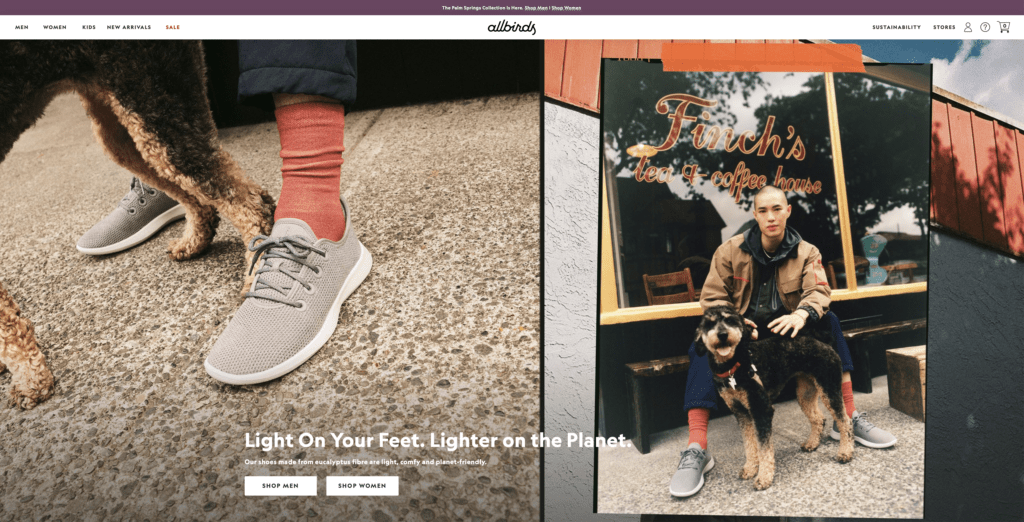
Tesla: Innovative, Cutting-edge, Sustainable
Tesla conveys an innovative and cutting-edge brand personality.
Tesla’s brand messaging emphasises technological innovation, environmental consciousness, and a futuristic vision of transport.
Again, Tesla shares some of the same values but approaches its brand personality very differently from Allbirds and Otaly.
Have a look at the Tesla website.
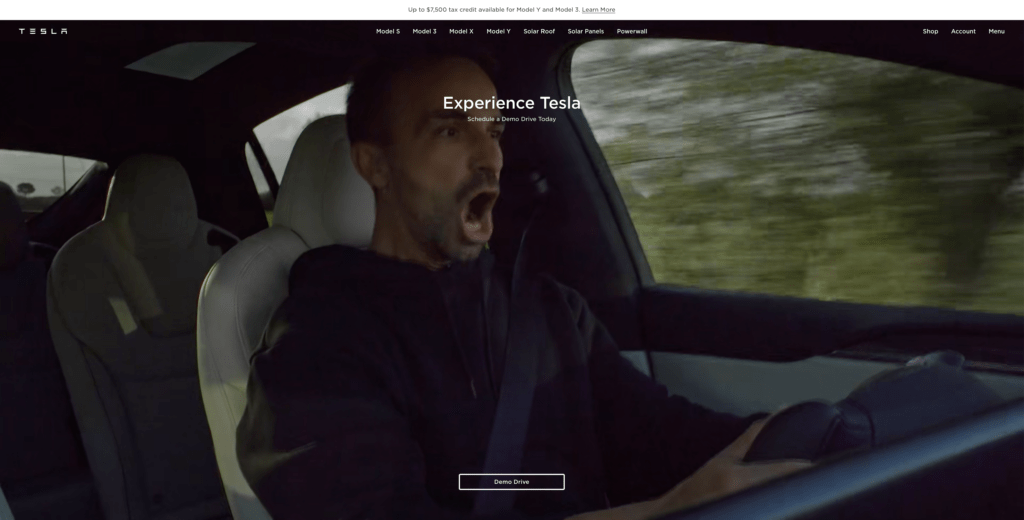
Lululemon: Inspirational, Motivational, Active
Lululemon has an inspiring and motivating brand personality. The brand encourages customers to lead healthy, active lifestyles and inspires personal growth.
Lululemon’s brand messaging emphasises mindfulness and pushes boundaries, which resonates with people seeking high-performance activewear and a sense of community.
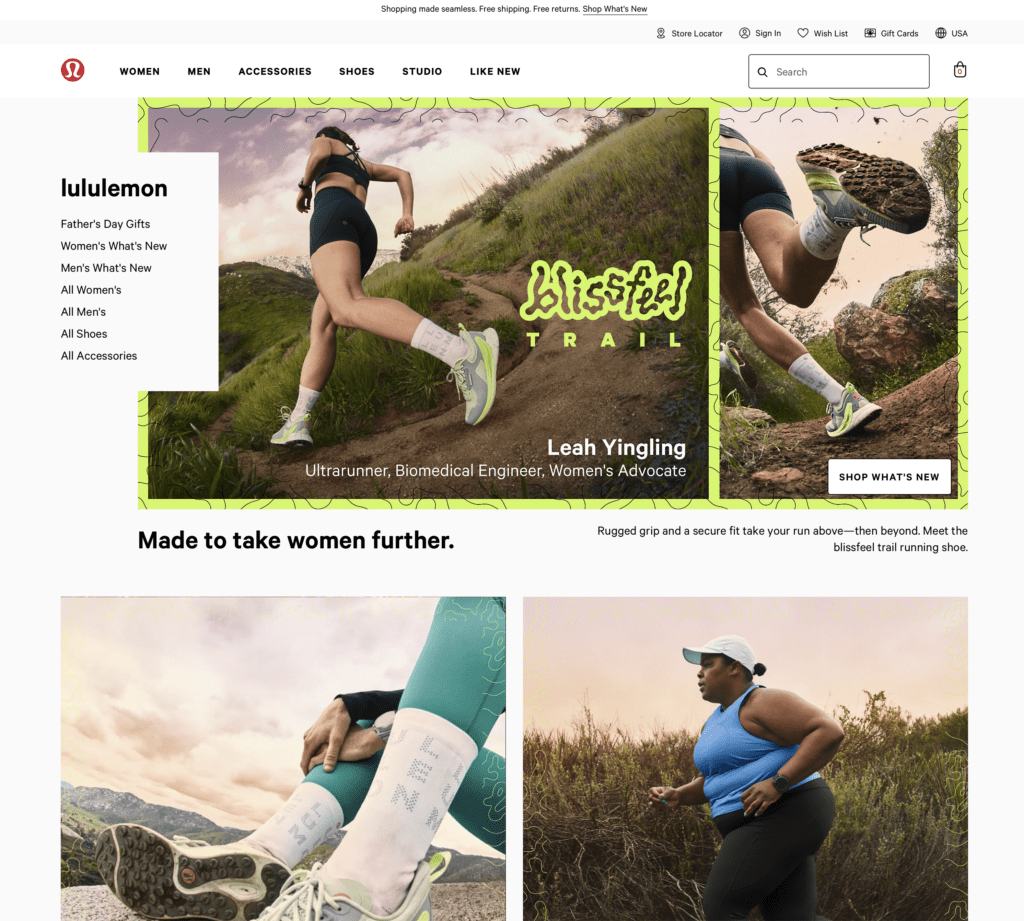
Airbnb: Welcoming, Adventurous, Connected
Airbnb has a welcoming and adventurous brand personality. It is built on the idea of belonging. Airbnb offers unique travel experiences that connect people from different cultures.
Airbnb promotes exploration, cultural immersion, and building meaningful connections through travel in a welcoming way.
Have a look at the Airbnb website. Notice how user-friendly and welcoming it is with its colours, images, round shapes and words?
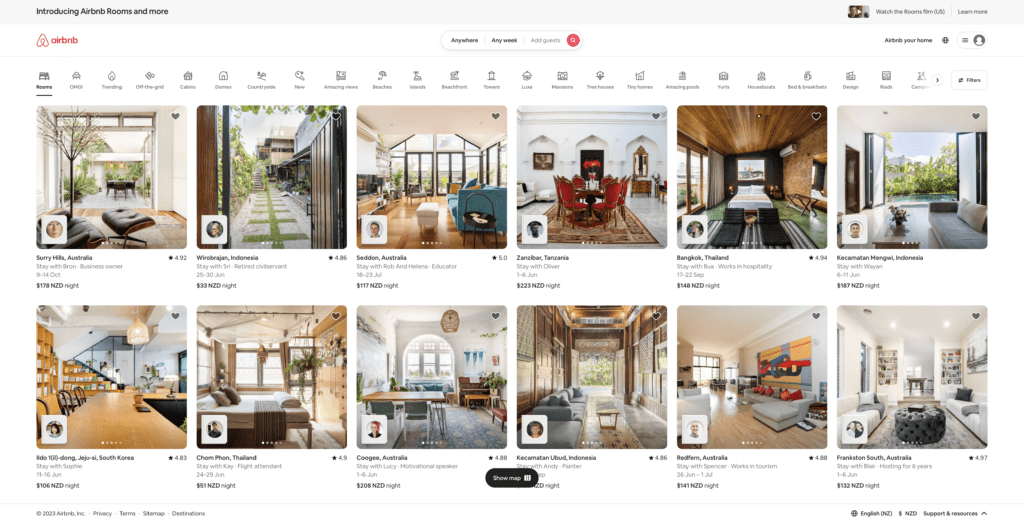
Conclusion
Your brand personality plays a major role in shaping people’s perceptions and cultivating connections.
Crafting and leveraging a unique brand personality can help you effectively communicate your values, engage customers authentically, and create an unforgettable brand experience.
As you can see, your brand personality is a powerful tool that can help your brand drive long-term success.
If you enjoyed reading this, you would also like my article on creating a distinctive brand voice—the expression of your unique brand personality.
If you need help crafting a thrilling brand personality for your brand, let’s talk!
Title image by Angela Roma






